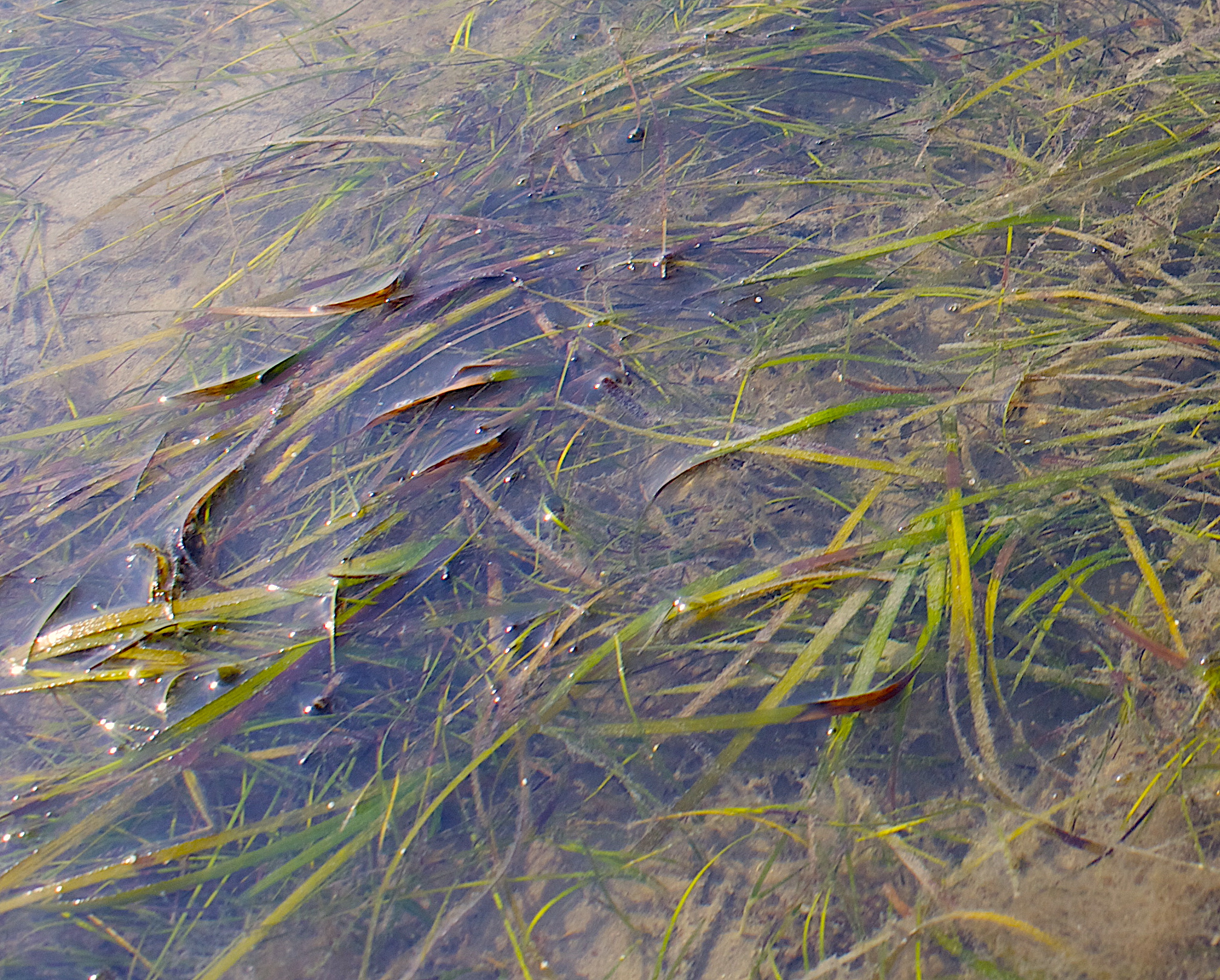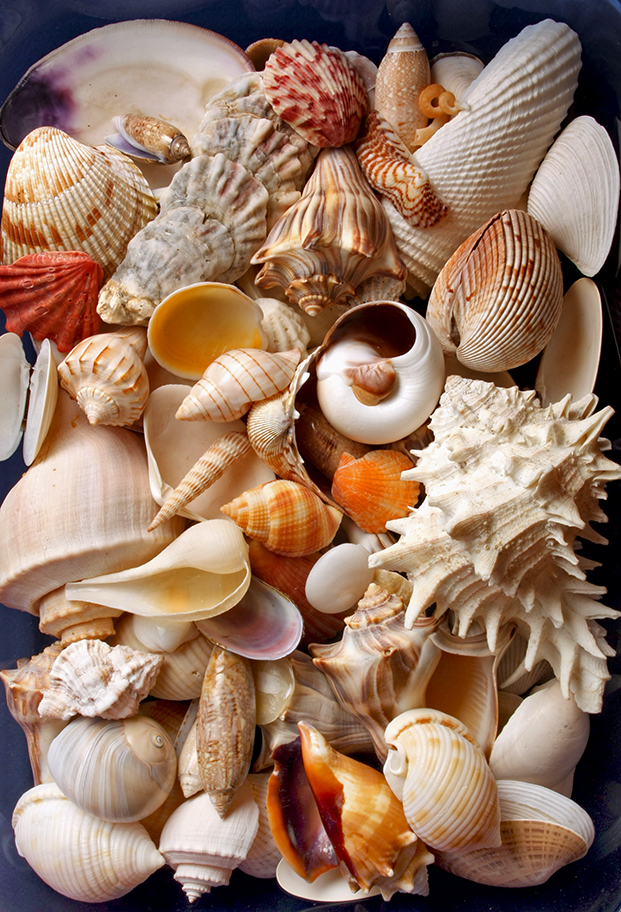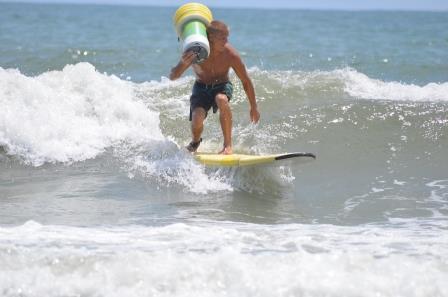Coastal Wild Edibles: Stalking the Wild Sea Lettuce

Most everyone over a certain age remembers Euell Gibbons. An internationally known expert on wild foods, he wrote classic books such as Stalking the Wild Asparagus and Stalking the Blue-eyed Scallop, and had numerous followers and disciples. Who can forget the man who encouraged us to eat Grape Nuts brand cereal made from wild hickory nuts and pine trees?
Gibbons’ message still has a good point, especially in today’s economic climate: Get sustenance from the land as our ancestors did. But how does one go about living off the land?
Here in the coastal area, it can be easier than it seems.
Besides typical seafood — crabs, shrimp, fishes and the like — that anyone can catch (or buy), clean, cook and eat, there are some atypical species to consider.
Mole crabs (Emerita talpoida), sometimes referred to as sand fleas, are not just bait for pompano. These tiny crustaceans live in the surf zone and move up and down the beach slope with the surf. You can watch them feed after a wave. Look for a V on the surface of the sand as the water washes out. That is the mole crab’s antennae, filtering a good meal out of the wash.
Use a pound or two of mole crabs to make a delicious bowl of mole crab chowder (see recipe below).

If you consider what was left behind in Native American shell middens, you realize that many other marine invertebrates are edible, including:
- Coquina clams (Donax variabilis), tiny bivalve mollusks found beneath the sand in the surf zone.
- Whelks (Busycon spp.), large marine snails found in ocean and marsh.
- Periwinkles (Littorina irrorata), snails that crawl up and down marsh grasses.
- Rangia clams (Rangia cuneata) that prefer lower salinity waters like our North Carolina sounds.
Coastal edibles are not just limited to animals. Plants also served as food for old-timers and Native Americans alike — including my favorites, such as sea lettuce, beach beans, glasswort and cattails.
Sea lettuce (Ulva lactuca) is an alga that received its common name because its wavy, bright green blade looks like lettuce. Found worldwide, sea lettuce grows quickly during spring and early summer, and can be collected at low tide.
It is a fiber- and iron-rich food. The lettuce also contains vitamins A, B1 and C, as well as potassium, magnesium, sodium and calcium.
Wash off the sand and add raw sea lettuce to salads. Or dry it slowly in the oven to crumble into soups and sauces, sprinkle on popcorn for seasoning or bake into sea lettuce squares (see recipe below).
Dune areas are home to the beach bean vine, also called trailing wild bean (Strophostyles helvola). This dune plant has beautiful pink/ lavender flowers with seed pods that resemble tiny green beans. I’ve eaten young beach beans in astir-fry with other vegetables. When the seed pods get older and start to dry out, you can shell and boil them like peas or roast them like peanuts. But be careful not to damage the fragile dune when you pick this plant.
Glasswort or pickleweed (Salicornia spp.) is a thick, leafless, fleshy halophyte — or a salt-tolerant plant — that stores water and salt in its tissues. The plant is bright green in the spring and summer, and turns a rich red in the fall. Harvesting is best while the plant is green. Older glasswort gets tough and fibrous. Pick, wash to remove sand or mud, and toss raw pieces into a salad for a salty, crunchy bite. Another option is to include chopped glasswort in a cheese ball. Glasswort is also delicious when pickled.
The “marsh’s supermarket” is one nickname of the ubiquitous cattail (Typha spp). Many parts of these tall, reed-like plants can be used for food, so if you’re ever stranded in the middle of a freshwater marsh, you’ll be able to survive.

Cattails produce male and female flowers on the same stalk. The male flower is on top and the female flower below. The female flower starts out green, and then turns brown with mature seeds after pollination. The male flower turns very yellow when the pollen is mature. Once all the pollen has been released, the male flowers fall away, leaving a narrow spike above the fuzzy brown “cigar” that is common in dried flower arrangements.
Yellow pollen collected from the male part of the flower during spring can be substituted for part of the flour in pancake or muffin recipes (substituting 30 to 50 percent is recommended). The female part of the flower head is green before pollination and can be cooked and eaten with butter, similar to corn-on-the-cob. The green female flowers can also be stripped from the stalk and used in soups or frittatas.
In addition, the young cattail shoots found by stripping away leaves can be added to vegetable stir-fries. Also known as Cossack asparagus, the white, tender shoots taste more like cucumbers than asparagus.
Other recipes for cattails include scalloped cattails, cattails augratin and cattail flower refrigerator pickles.
Cattail roots can be harvested, dried and ground into flour. But be careful eating cattail roots. They serve as filters and may contain filtered-out pollutants that can end up in your system.
This is just a taste of the many wild edibles that inhabit North Carolina’s coast. Enjoy foraging on your own. Eat your own backyard and try your hand at a wild recipe or two.
But one bit of caution: Always be 100 percent sure of your plant or animal identification.
LEARN MORE
From 1978 through 1996, the N.C. Aquarium on Roanoke Island coordinated and hosted the annual October Marsh and Sea Fest. This wild food event brought people from North Carolina and surrounding states to forage, collect, clean, cook and enjoy coastal wild edibles — from blue crabs, American eels and coquina clams to cattails, sea rocket and duck potatoes.
Even though this festival no longer happens, there are still many ways you can satisfy your curiosity about wild food foraging and recipes.
ATTEND
- Experience North Carolina wild foods at N.C. Wild Foods Weekend, hosted by the N.C. Wild Foods Association each April at the Betsy-Jeff Penn 4-H Center in Reidsville. The next weekend will be in April 2012. You can find more information on the Wild Food Adventures website.
- Attend the 44th annual Natural Wonder Wild Food Weekend, sponsored by the National Wild Foods Association, to taste wild edibles from other parts of the country. Set for Sept. 16-18 at North Bend State Park in Cairo, W. Va., this event includes guided walks, lectures and lots of feasting on wild foods. Information is available at: www.wildfoodadventures.com/naturewonderweekend.html.
VISIT
READ
- Gibbons, Euell. 1964. Stalking the Blue-eyed Scallop. New York: David McKay Company, Inc.
- Madlener, Judith Cooper. 1977. The Sea Vegetable Book. New York: Clarkson N. Potter, Inc.
- Spitsbergen, Judith M. and Jeannie W. Kraus (editors). 1993. Strange Seafood Cookbook, 4th edition. Beaufort, N.C.: N.C. Maritime Museum.
- Wood, Edelene. 1990. A Taste of the Wild. Elgin, Pa.: Allegheny Press.
- Zachary, Hugh. 1969. The Beachcomber’s Handbook of Seafood Cookery. Winston-Salem, N.C.:John F. Blair.
MORE READING!!
COOK SOMETHING!
MOLE CRAB CHOWDER (from October Marsh and Sea Fest, Manteo)
• 1 to 2 pounds live mole crabs
• 2 cups water
• 6 slices bacon, diced
• 2 red onions, chopped
• 2 cloves garlic, crushed
• 1 cup diced potatoes
• 2 cups water
• 1 bay leaf
• 1 16-ounce can tomatoes
• 1 teaspoon salt
• 1/4 teaspoon pepper
• 1/4 cup minced cilantro
Wash mole crabs to remove sand. Steam them in a covered pan with 2 cups of water until they are tender, about 20 minutes. Remove from the stove and, with the crabs still in the broth, mash thoroughly with a potato masher. Strain through cheesecloth, retaining the broth and discarding the crabs. This broth is the flavoring for the chowder. Fry bacon until crisp and remove from pan. Add onions and garlic to bacon grease and saute for 5 minutes. In a large saucepan, combine fried bacon-onion-garlic combination with potatoes, 2 cups water and bay leaf. Cover and simmer for 10 to 15 minutes, until potatoes are tender. Add crab broth, tomatoes, salt, and pepper. Heat thoroughly, but do not boil. Just before serving, stir in cilantro.
SEA LETTUCE SQUARES (from Strange Seafood Cookbook)
• 1 cup flour
• 1 teaspoon baking powder
• 1 cup dried sea lettuce
• 8 ounces sharp cheddar, grated
• 1/2 cup chopped onion
• Dash of garlic powder
• 2 eggs
• 1 cup milk
• 1/4 cup butter, melted
Sift flour and baking powder together. Add sea lettuce, cheese, onions and garlic powder and mix well. Add eggs, milk and melted butter and mix well. Pour into a greased 13 x 9-inch baking pan. Bake at 350 F for 30 to 35 minutes. When done, cut into squares. Serve hot or cold.
Click here for additional recipes for glasswort cheese ball, toasted beach beans and cattail pollen pancakes.
This article was published in the Summer 2011 issue of Coastwatch.
For contact information and reprint requests, visit ncseagrant.ncsu.edu/coastwatch/contact/.
- Categories:


